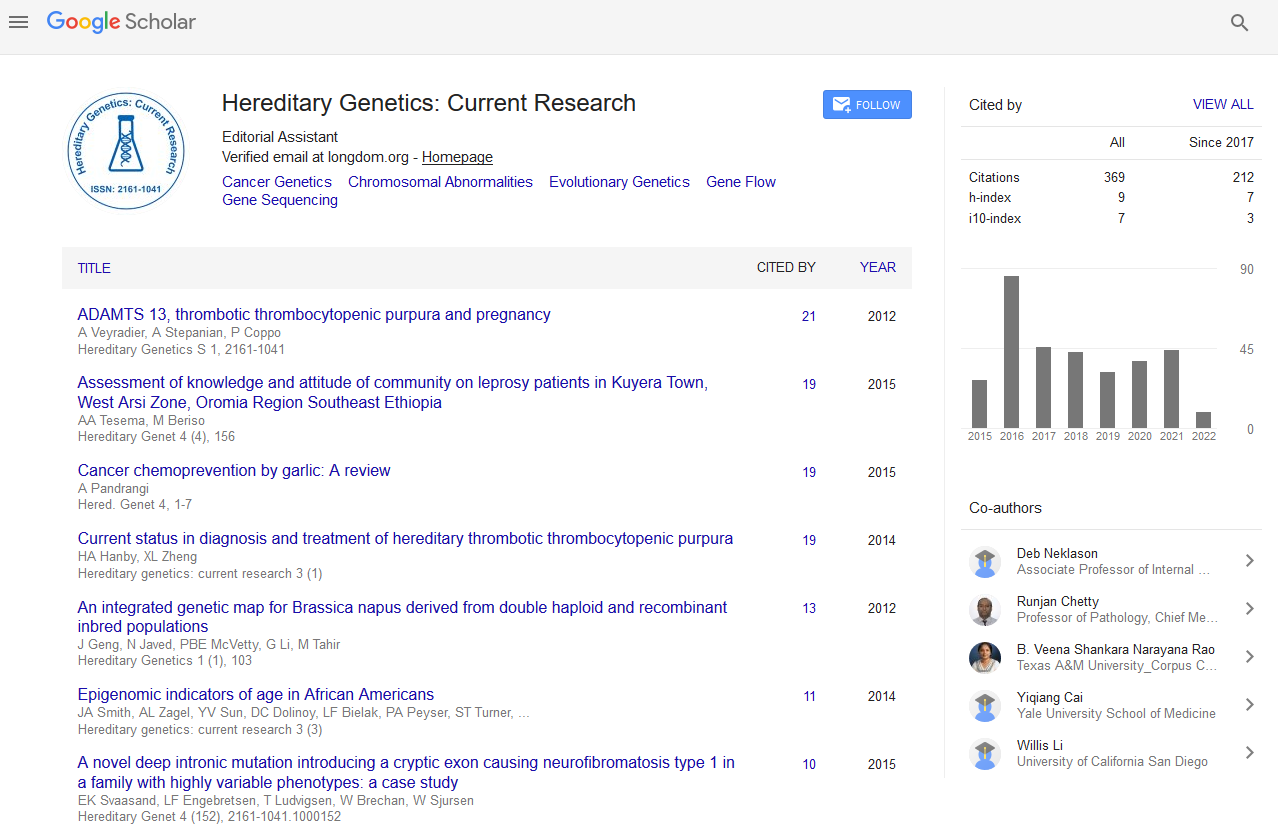PMC/PubMed Indexed Articles
Indexed In
- Open J Gate
- Genamics JournalSeek
- CiteFactor
- RefSeek
- Hamdard University
- EBSCO A-Z
- NSD - Norwegian Centre for Research Data
- OCLC- WorldCat
- Publons
- Geneva Foundation for Medical Education and Research
- Euro Pub
- Google Scholar
Useful Links
Share This Page
Journal Flyer

Open Access Journals
- Agri and Aquaculture
- Biochemistry
- Bioinformatics & Systems Biology
- Business & Management
- Chemistry
- Clinical Sciences
- Engineering
- Food & Nutrition
- General Science
- Genetics & Molecular Biology
- Immunology & Microbiology
- Medical Sciences
- Neuroscience & Psychology
- Nursing & Health Care
- Pharmaceutical Sciences
Abstract
Mature Cystic Ovarian Teratoma: A Study of 43 Congolese Cases
Henriette Poaty, Dimitry Moudiongui Mboungou, Yolande Voumbo Mavoungou, Jean Jacques Candelier, Jean Félix Peko, Léon Hervé Iloki and Philippe Coullin
Background: The mature cystic ovarian teratoma (MCOT) is a common benign ovarian neoplasm in the world, most prevalent among women of childbearing age. It is a disease related to parental imprinting in which genome is exclusively maternal. The purpose of the study was to review the tumour features in Congolese patients in order to clarify its prevalence, and its histological forms and to report the eventual associated chromosomal anomalies described in literature.
Methods: It was a retrospective study of MCOT seen in University Teaching Hospital of Brazzaville for a period of seven years, and five DNAs previously extracted from five MCOT. Two antibodies: DLK1 and TIMP2 were also studied by immunohistochemistry (IHC).
The confirmed positive diagnosis was performed by Hematoxylin-Eosin method. The eventual presence of chromosomal anomalies was investigated by metaphasic Comparative Genomic Hybridization (mCGH) method. IHC analysis had permit to verify expression of paternal imprinted gene DLK1 expression compared to maternal imprinted gene TIMP2.
Results: During the study period, a total of 215 cases of ovarian neoplasms have been seen, from which 20% (43/215 cases) with confidence interval (CI) 95% = [14.7% - 25.3%] were diagnosed MCOT. They represent 38.7% (43/111 cases) (IC 95% = [29.9% - 48.1%]) of all benign ovarian tumors and they account for 0.4% (43/10170) of all tumors diagnosed during the study period. The average age of patients having MCOT was 30.7 years with extreme ranging from 2 to 70 years. Cutaneous tissue was the most prevalent histological form. About IHC analysis, no staining was observed with mono-allelic paternal gene DLK1 contrasting with high TIMP2 staining of nuclear stem cells in the basal layer of the epidermis. Concerning mCGH, no profile revealed chromosomal rearrangements.
Conclusion: The benign ovarian teratoma remains a common ovarian neoplasm in young Congolese women in reproductive age. The predominant skin tissue form signed the current called ovarian dermoid cyst. The CGH analysis in our study revealed that pathology is not associated with chromosomal anomalies, but some associations are described in literature.


